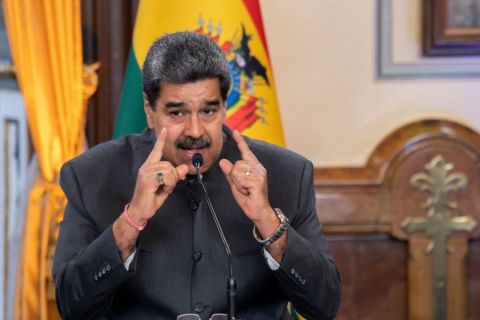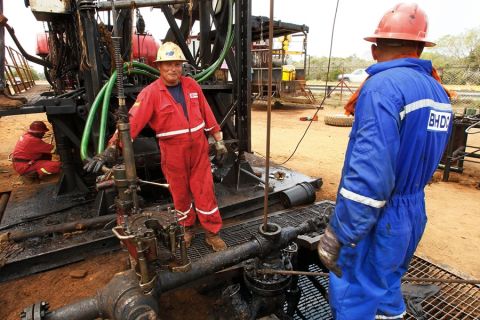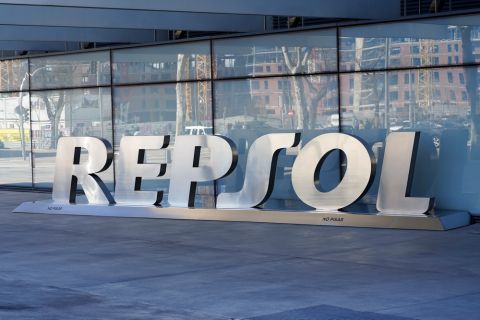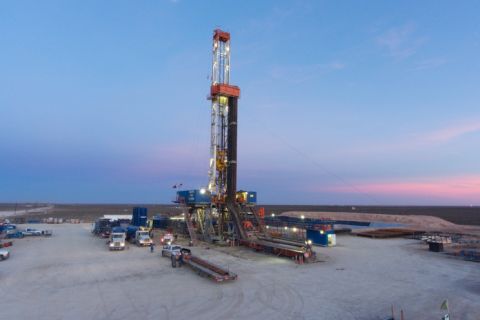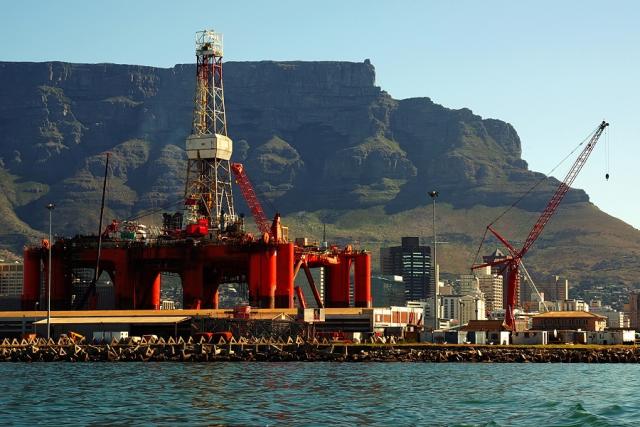
A drilling rig near Cape Town, South Africa. (Source: Shutterstock.com)
Despite the many advancements in the oil and gas industry, deepwater drilling remains a key source for meeting global energy demand. Because companies and countries recognize this, a plethora of new oil and gas developments dot the offshore horizon all around the globe.
New projects in Africa are progressing in countries not known for deepwater activity, with the Ivory Coast and Senegal making a name for themselves in the sector.
Both North America and South America are already home to many deepwater projects—the Gulf of Mexico and offshore Brazil being two of the most prominent areas for such projects. However, Guyana is becoming a burgeoning power in the region.
Australia continues to produce and export LNG. Asia also makes a strong contribution to the oil & gas sector and is home to some of the largest oil producing nations, with Malaysia being the world's third-largest LNG exporter.
Israel is also coming into its own in the oil and gas sector, as recent discoveries of offshore natural gas reserves have transformed Israel from a net importer to self-sufficiency and an exporter.
E&P’s latest project-by-project summary highlights some of the latest deepwater developments, based on publicly available information and analysis. The first in a multi-part series, the following is a look at some of the deepwater projects offshore Africa.
Part two will cover deepwater projects in Australasia.
Offshore Africa Deepwater Projects |
|||||||
| Project Name | Country | Block | Water depth, feet | Status | Facility type | Onstream date | Operator |
| Agogo | Angola | Block 15/06 | 5,500 | Sanctioned | FPSO | 2026 | Azule |
| Baleine | Ivory Coast | CI-802 | 3,773 | Sanctioned | FPSO | 2023 | Eni |
| Greater Tortue Ahmeyim | Mauritania & Senegal | Block C-8, Saint-Louis Offshore Profond | 9,350 | Sanctioned | FPSO | 2023 | BP |
| Luiperd-Brulpadda | South Africa | Outeniqua Basin Block 11B/12B | 5,905 | Planning | FPSO | 2026-2027 | Total |
| Sangomar | Senegal | Sangomar Offshore Profond | 2,560 | Sanctioned | FPSO | 2023 | Woodside |
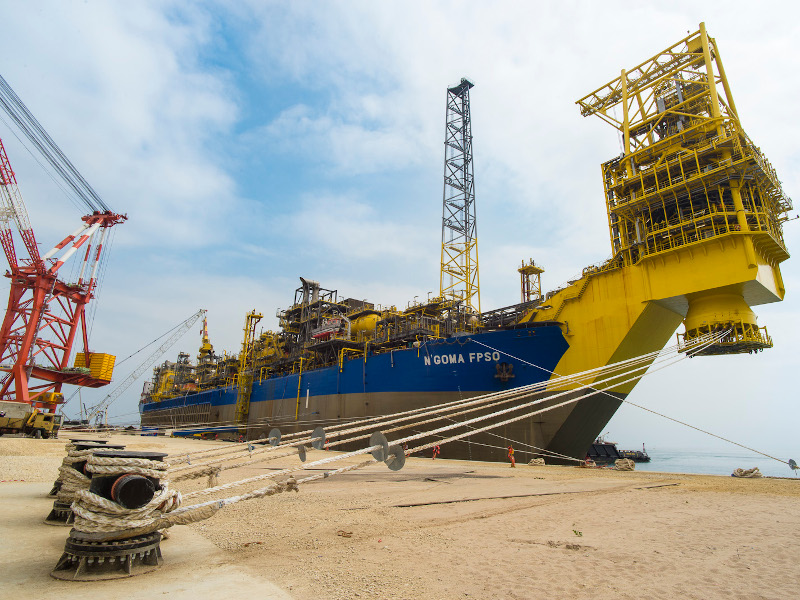
Agogo
Azule Energy’s Agogo hub project offshore Angola is expected to reach first oil in 2026. Located in Block 15/06, at a depth of 5,500 ft, the sanctioned project will develop the Agogo and Ndungu fields with 21 new production wells and 15 injection wells. They will produce to both the existing Ngoma FPSO and the new Agogo FPSO. The converted FPSO will have capacity for 120,000 barrels per day (bbl/d) of oil, 230 million cubic feet per day (MMcf/d) of gas injection and 120,000 bbl/d of water injection. Peak production is expected to average 175,000 bbl/d.
In February, Azule awarded $7.8 billion in contracts for the project to Yinson Production, Baker Hughes, Aker Solutions, Saipem, Subsea7 and TechnipFMC.
Yinson will supply the FPSO along with field operations and maintenance services, while Baker Hughes will supply subsea production system and aftermarket services. The Baker Hughes contract includes 23 standard subsea trees, 11 Aptara manifolds, SemStar5 fiber optic controls and the related system scope of supply.
Aker Solutions will supply the umbilical system under a contract that includes the engineering, manufacturing and delivery of a complete umbilical system totaling about 36 km of both dynamic and static subsea production control umbilicals. Aker Solutions’ Moss, Norway, facility will manufacture the umbilicals, with planned delivery in the second quarter of 2024.
Saipem will be mobilizing its FDS2 installation vessel to supply rigid Pipe-in-Pipe flowlines and associated subsea structure transportation and installation. Subsea7 will transport and install the risers, flowlines and subsea structures. TechnipFMC will supply the risers and flowlines under a contract that includes the engineering, procurement and supply of jumpers, flowlines, risers and all associated ancillary equipment.
Eni Angola SPA, a wholly owned subsidiary of Azule Energy, operates Block 15/06 with 36.85% interest on behalf of partners Sonangol P&P with 36.84% and SSI Fifteen Limited with 26.32%.
Azule Energy is an incorporated joint venture (JV) between BP Plc and Eni SpA, with BP and Eni each holding a 50% share.
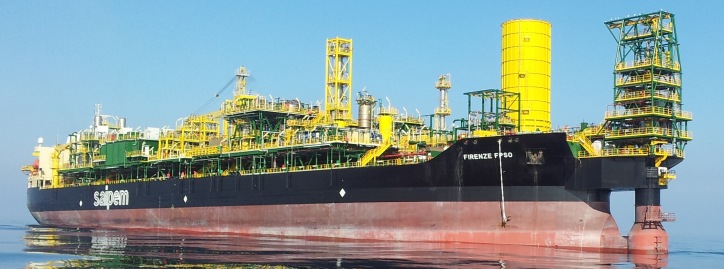
Baleine
Eni’s Baleine deepwater development offshore Ivory Coast is expected to go onstream later this year. The operator first announced the Baleine-1x discovery well in 3,773 ft water depth in 2021, making it the country’s first commercial discovery in 20 years.
The discovery, which is located in Block CI-101, was initially estimated to hold over 2 billion barrels (Bbbl) of oil and 2.4 trillion cubic feet (Tcf) of associated gas. In 2022, a second discovery in the field drove the estimate up to 2.5 billion barrels of oil and 3.3 Tcf of associated gas.
In September 2022, Saipem was awarded two contracts worth more than $900 million combined for the development of Phase 1 of the Baleine project. One contract, which commenced in fourth-quarter 2022, was carried out by Saipem flagship vessel FDS2 on a fast-track schedule. The contract is for the engineering, procurement, construction and installation (EPCI) of subsea umbilicals, risers and flowlines (SURF) and of an onshore gas pipeline for the connection to the distribution grid.
The other contract—also developed with a fast-track schedule—is for engineering, procurement, construction and commissioning activities related to the refurbishment of the Firenze FPSO. Firenze was previously at the Aqula Field in the Adriatic Sea and has been drydocked in Dubai, United Arab Emirates, since. The contract also handles 10 years of operations and maintenance services for the vessel.
A production test confirmed a potential of at least 12,000 bbl/d of oil and 1,400 cf/d of associated gas from Baleine 1X. Eni plans to drill a third well, and production in the block is expected to start in the first half of 2023.
The company expects to produce 12,000 bbl/d and 17.5 MMcf/d from Phase 1 next year before ramping up to at least 75,000 bbl/d and 140 MMcf/d in Phase 2 expected in 2026.
Eni holds a 90% operated interest in the field and Petroci Holdings holds 10%.

Greater Tortue Ahmeyim
Despite delays caused by the COVID-19 pandemic, Phase 1 of the BP-operated Greater Tortue Ahmeyim (GTA) LNG project is expected online in third-quarter 2023. First gas was initially expected in 2022, but the pandemic pushed back the FPSO sailaway date to fourth-quarter 2022, delaying the project.
GTA Phase 1 is located in Block C-8 offshore Mauritania and Saint-Louis Offshore Profond offshore Senegal. The field, which is in 9,350 ft water depth, is located on the maritime border of Mauritania and Senegal and spans five blocks in both countries (three in Mauritania and two in Senegal). Phase 1 of the project, which is the largest in BP’s portfolio, reached final investment decision (FID) in 2018 and is expected to produce around 2.3 million tonnes (MMtonne) of LNG per year when operations begin later this year.
The project will export gas to an FPSO approximately 25 miles offshore where the gas will be processed and liquids separated. The gas will then be exported to a floating LNG facility (FLNG) 6 miles offshore. The FPSO left the COSCO shipyard in China in January, and is expected to arrive onsite in second quarter 2023. Golar LNG is converting the Gimi into the FLNG unit. It remains under construction.
In 2019, McDermott International won the EPCI contract for SURF, while Baker Hughes won the contract to provide five large-bore deepwater horizontal xmas trees — a 6-slot dual bore manifold, a pipeline end manifold, subsea distribution units, three subsea isolation valves, diverless connections and subsea production control systems. TechnipFMC won a contract for the EPCI and commissioning of the FPSO that will be deployed for the project.
For Phase 2, BP is evaluating a gravity-based structure as its basis. GTA Phase 2 is expected to have a throughput capacity between 2.5 million tonnes per annum (mtpa)-3 mtpa.
The Saint-Louis Offshore Profond block offshore Senegal is operated by BP with a 60% working interest, with partners Kosmos Energy (30%) and PETROSEN (10%)..
The C-8 Block offshore Mauritania is operated by BP with a 62% stake, while Kosmos Energy holds 28% and Société Mauritanienne des Hydrocarbures with 10%.
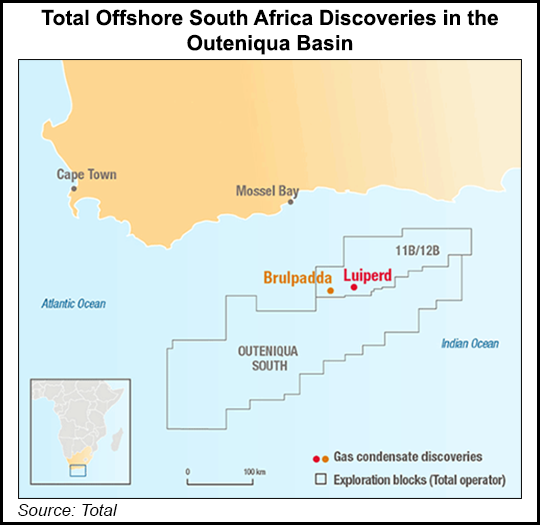
Luiperd-Brulpadda
FID on TotalEnergies’ discovery of gas reserves in the Luiperd and Brulpadda fields offshore South Africa is expected to come sometime this year.
TotalEnergies and its partners plan to fast-track the field, located at a depth of 5,905 ft in Block 11B/12B. TotalEnergies proposes an early production system for the first phase, with a three-well Luiperd development tied back to existing infrastructure in Block 9 of the Outeniqua Basin. From there, gas will flow via an existing pipeline to either the PetroSA-operated Mossel Bay gas-to-liquids refinery or to state power giant Eskom’s nearby diesel power plant. The plant could be converted to run on natural gas.
TotalEnergies applied for production rights for the block in September 2022.
Phase 1 could potentially start up in 2027 at an estimated cost of $2.5 billion and with a breakeven cost of around $30/bbl. Production would be limited by existing infrastructure capacity to 210 MMcf/d of gas and 18,000 bbl/d of condensate. Development of Brulpadda for Phase 2 could more than double production.
TotalEnergies operates the field with a 45% working interest, alongside Qatar Petroleum with 25%, CNR International with 20% and Main Street, a South African consortium, with 10%.
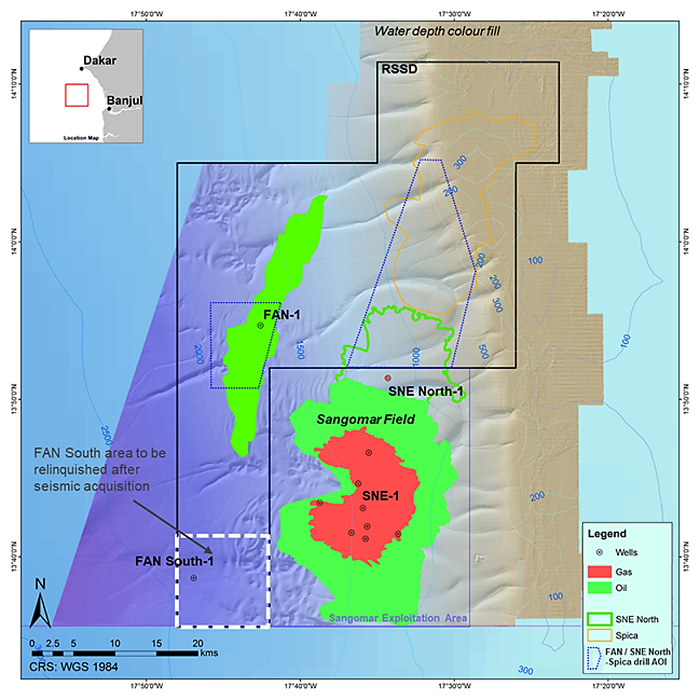
Sangomar
First production at Woodside’s Sangomar Field (formerly the SNE Field), which contains both oil and gas, is expected in late 2023. The field in 2,560 ft water depth is approximately 62 miles south of Dakar, Senegal, in the Sangomar Offshore Profond.
Phase 1 of the project will feature a permanently moored FPSO facility, along with 23 oil production wells, plus water and gas injection wells and associated subsea systems. Production from Phase 1 is expected at 231 MMbbl with total recoverable oil resources estimated around 500 MMbbl over the life of the field. FID on the project was reached in January 2020, and work on the project began that same year.
Diamond Offshore drillship Ocean BlackRhino started its drilling campaign in July 2021 and was later joined by the Ocean BlackHawk in July 2022 using a batch drilling approach to enable operational efficiencies. Subsea equipment fabrication is complete, and the subsea installation campaign started in September 2022.
Woodside Energy awarded MODEC International project’s FEED contract for an FPSO in February 2019. The Subsea Integration Alliance, a JV between OneSubsea, SLB and Subsea 7, won the SURF contract in 2018. Transocean provided the drilling rigs for the SNE exploration and appraisal activities.
Woodside is operator and holds an 82% participating interest in the Sangomar exploitation area and a 90% participating interest of the remaining Rufisque Offshore, Sangomar Offshore and Sangomar Deep Offshore (RSSD) evaluation area.
The project is being developed by a joint venture of Rufisque Offshore, Sangomar Offshore and Sangomar Deep Offshore (RSSD), comprising Capricorn Senegal, a subsidiary of Cairn Energy (36.44%), Woodside Energy (31.89%), FAR (13.67%) and PETROSEN (18%), with Woodside Energy as the project operator.
Recommended Reading
US Orders Most Companies to Wind Down Operations in Venezuela by May
2024-04-17 - The U.S. Office of Foreign Assets Control issued a new license related to Venezuela that gives companies until the end of May to wind down operations following a lack of progress on national elections.
US Decision on Venezuelan License to Dictate Production Flow
2024-04-05 - The outlook for Venezuela’s oil industry appears uncertain, Rystad Energy said April 4 in a research report, as a license issued by the U.S. Office of Assets Control (OFAC) is set to expire on April 18.
Repsol Eyes Increasing Core US Upstream Business
2024-02-29 - Madrid-based Repsol SA will invest €$2.2 billion (US$2.38 billion) between 2024-2027 on its unconventional assets in the Marcellus and Eagle Ford as it focuses on increasing its core U.S. upstream business platform.
APA’s Permian to Pick up Production Slack Amid Overseas Headaches
2024-02-26 - With various overseas headaches, Houston-based APA Corp. aims to boost its Permian Basin volumes and integrate its Callon Petroleum acquisition when it closes in the second quarter.


